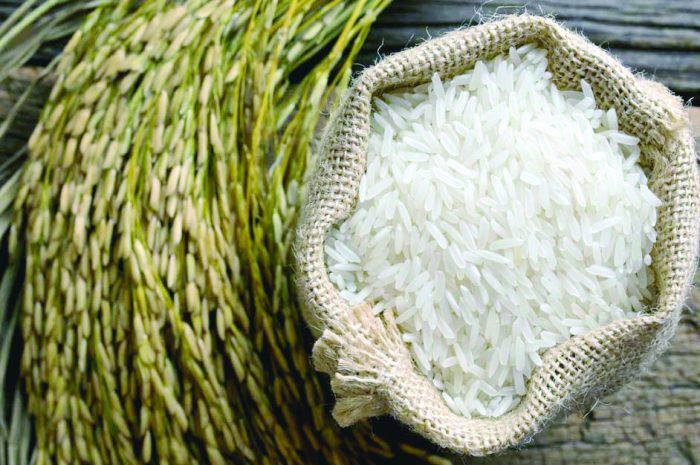Rice is a staple food for billions of people around the world, often serving as a central part of daily meals. Whether served as a side dish, incorporated into soups and stews, or eaten with vegetables and proteins, rice is a beloved and versatile carbohydrate. However, for individuals with diabetes, rice can raise important questions: Is rice good for diabetics to eat? The answer to this question is multifaceted and depends on the type of rice, portion sizes, preparation methods, and an individual’s overall dietary needs and blood sugar management.
Diabetes is a condition where the body is unable to properly regulate blood sugar levels due to either a lack of insulin (in the case of Type 1 diabetes) or insulin resistance (in the case of Type 2 diabetes). A primary goal of diabetes management is maintaining stable blood glucose levels, and diet plays a significant role in this process. Since carbohydrates are the macronutrients most directly affecting blood sugar, understanding how rice fits into the diabetic diet is essential for optimal glucose control.
This article explores the relationship between rice and diabetes, reviewing the different types of rice available, their impact on blood sugar, and the role of rice in a healthy diabetic diet. We will also discuss the importance of portion control, how to make rice a more diabetic-friendly food, and the best practices for incorporating rice into meals.
Understanding Diabetes and Carbohydrates
To comprehend whether rice is suitable for diabetics, it’s crucial to understand the relationship between carbohydrates and blood sugar levels. Carbohydrates are broken down into glucose during digestion, which enters the bloodstream and causes blood sugar levels to rise. This glucose serves as the primary source of energy for the body’s cells.
In individuals without diabetes, the pancreas releases insulin in response to the rise in blood glucose, helping to transport glucose into cells and regulate blood sugar levels. However, in diabetics, either the body doesn’t produce enough insulin (Type 1) or the body’s cells do not respond to insulin effectively (Type 2). As a result, blood glucose levels can become elevated, which can lead to complications such as nerve damage, kidney disease, heart disease, and vision problems.
Carbohydrate counting is a common method used by people with diabetes to manage blood sugar. This involves keeping track of the carbohydrates in each meal and adjusting insulin levels or other medications accordingly. Since rice is a high-carbohydrate food, portion size and type are critical considerations for anyone with diabetes.
The Glycemic Index (GI) and Its Role in Diabetes
When evaluating whether rice is good for diabetics, one important factor to consider is the glycemic index (GI). The GI measures how quickly a food raises blood glucose levels after it is consumed. Foods with a high glycemic index (above 70) cause rapid spikes in blood sugar, while foods with a low glycemic index (below 55) have a slower, more gradual effect on blood glucose.
The glycemic index of rice varies depending on the type of rice, how it is processed, and how it is cooked. For example, white rice has a high GI, meaning it can cause blood sugar to rise quickly, making it less ideal for diabetics. On the other hand, whole-grain varieties of rice, such as brown rice or wild rice, have a lower GI, meaning they may cause a slower rise in blood sugar. Therefore, choosing rice varieties with a low GI can help people with diabetes better manage their blood glucose levels.
In addition to GI, it is important to consider the glycemic load (GL), which takes into account the carbohydrate content in a typical serving size of a food. A food with a high glycemic load will raise blood sugar more significantly than one with a low glycemic load. Understanding both the GI and GL of rice can help individuals with diabetes make informed decisions about their food choices.
Types of Rice and Their Impact on Blood Sugar
Rice comes in many different varieties, each with unique characteristics, and these varieties have differing effects on blood sugar. Let’s take a closer look at the most commonly consumed types of rice, their glycemic index, and how they may fit into a diabetic-friendly diet.
1. White Rice
White rice is the most commonly consumed rice worldwide. It is made from polished rice grains that have had the bran and germ removed, leaving only the starchy endosperm. While white rice is a good source of quick energy, it is low in fiber, vitamins, and minerals.
Impact on Blood Sugar: White rice has a high glycemic index—typically ranging from 70 to 90, depending on the variety and how it is prepared. This means that consuming white rice causes a rapid spike in blood glucose levels, which can be problematic for individuals with diabetes. The lack of fiber in white rice also means it is digested quickly, further contributing to blood sugar spikes.
Recommendations for Diabetics: While white rice can be enjoyed occasionally by diabetics, it should be consumed in small portions and ideally paired with other foods that can help slow the absorption of glucose, such as high-fiber vegetables, protein sources (like lean meats, beans, or tofu), and healthy fats (such as avocado or olive oil). It is also important to avoid eating white rice in large portions or as the primary carbohydrate in a meal.
2. Brown Rice
Brown rice is a whole grain rice that retains its bran and germ, making it a richer source of fiber, vitamins, and minerals compared to white rice. It has a nuttier flavor and a chewier texture than white rice, and it is often recommended as a healthier alternative.
Impact on Blood Sugar: Brown rice has a lower glycemic index than white rice, typically around 50 to 60. This means that it causes a slower, more gradual rise in blood sugar, making it a better option for people with diabetes. The higher fiber content in brown rice helps to slow down digestion and improve blood sugar control.
Recommendations for Diabetics: Brown rice is a better choice for diabetics than white rice due to its lower glycemic index and higher fiber content. It is important to note that while brown rice is a healthier option, portion control remains essential. A moderate portion (about 1/2 cup cooked) can be a nutritious and satisfying addition to a diabetic meal.
3. Wild Rice
Wild rice is not technically rice but is a type of aquatic grass. It has a distinct texture and flavor compared to other rice varieties. Wild rice is high in protein and fiber and contains a variety of minerals, including magnesium, zinc, and phosphorus.
Impact on Blood Sugar: Wild rice has a moderate glycemic index, typically around 45 to 55. This makes it a good choice for diabetics, as it causes a slower increase in blood glucose levels. Additionally, the high protein and fiber content in wild rice make it a filling option that can help manage hunger and prevent overeating.
Recommendations for Diabetics: Wild rice is an excellent choice for diabetics due to its low glycemic index, high fiber content, and nutritional profile. Like brown rice, portion control is key. A serving size of about 1/2 cup cooked wild rice, paired with protein and vegetables, can be a satisfying and diabetes-friendly meal.
4. Basmati Rice
Basmati rice is a long-grain variety of rice commonly used in Indian and Middle Eastern cuisine. It is available in both white and brown varieties, with the brown version containing more fiber and nutrients.
Impact on Blood Sugar: Brown basmati rice has a low glycemic index (around 50), making it a better option for diabetics. White basmati rice, however, has a higher glycemic index, similar to other types of white rice. Although it has a slightly lower GI than regular white rice, it still causes a rapid rise in blood glucose levels.
Recommendations for Diabetics: For diabetics, brown basmati rice is the preferred option due to its lower glycemic index and higher fiber content. If using white basmati rice, portion control and pairing with high-fiber vegetables and lean proteins are essential to minimize blood sugar spikes.
5. Jasmine Rice
Jasmine rice is a fragrant variety of white rice commonly used in Southeast Asian cooking. Like other white rice, it is low in fiber and has a higher glycemic index.
Impact on Blood Sugar: Jasmine rice has a high glycemic index, typically around 68 to 80, depending on the variety. This means it can cause a rapid increase in blood glucose levels, which is not ideal for individuals with diabetes.
Recommendations for Diabetics: Jasmine rice should be consumed in small portions and paired with fiber-rich and protein-packed foods to slow digestion and mitigate blood sugar spikes. Opting for brown jasmine rice, if available, is a better choice for diabetics.
Making Rice More Diabetic-Friendly
While some types of rice may be more suitable for individuals with diabetes than others, there are additional strategies to make rice more diabetic-friendly:
1. Choose Whole-Grain Rice
Whole-grain rice varieties, such as brown rice, wild rice, and brown basmati rice, are the best choices for diabetics. These options are higher in fiber, which helps slow digestion and minimize blood sugar spikes.
2. Control Portion Sizes
Portion size plays a critical role in blood sugar control. Even with healthier rice options, consuming large portions can lead to excessive carbohydrate intake and cause blood sugar levels to rise. A standard portion of cooked rice for diabetics is about 1/2 cup, but individual needs may vary.
3. Pair with Protein and Vegetables
To reduce the glycemic impact of rice, pairit with lean protein (such as chicken, fish, or tofu) and non-starchy vegetables (such as spinach, broccoli, or peppers). These additions help slow the digestion of carbohydrates and contribute to a more balanced meal.
4. Consider Cooking Methods
The way rice is cooked can also affect its glycemic index. Al dente rice (rice that is cooked until firm) has a lower glycemic index than rice that is overcooked and mushy. So, cooking rice to a firmer texture may help reduce its glycemic impact.
Conclusion
Rice can be part of a healthy diet for people with diabetes, but the type of rice, portion size, and meal composition are key factors in managing blood sugar levels. While white rice is not the best option for diabetics due to its high glycemic index, whole-grain varieties such as brown rice, wild rice, and brown basmati rice are better choices because they are rich in fiber and have a lower glycemic index.
Ultimately, diabetes management is about balance. By choosing healthier rice options, controlling portions, and pairing rice with other nutrient-dense foods like vegetables and lean proteins, individuals with diabetes can enjoy rice as part of a balanced meal plan. It is always important to work with a healthcare professional or registered dietitian to tailor dietary choices to individual needs and ensure effective blood glucose control.
By making mindful choices and staying informed about how different types of rice affect blood sugar, diabetics can enjoy a wide range of foods while maintaining optimal health and well-being.
Related topics:
What Can a Diabetic Take to Lose Weight


























